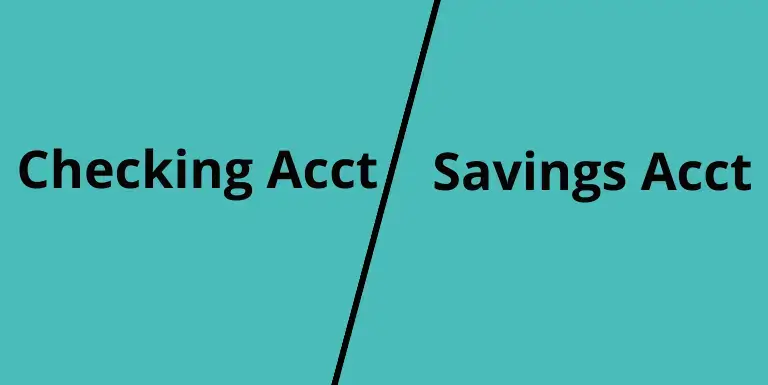Difference Between Savings and Checking Account : So you are planning to open one of those fancy bank accounts. In that case, let us talk about the difference between savings and checking account.
Most people are still confused as to what type of bank account they should be depositing their money.
Should you go for a savings account? But a checking account sounds cooler, right? Which is the most ideal for your financial plans and purposes?
What is Savings Account
A savings account is not for day to day use. You open a savings account basically because you would want to save money for future use or as an emergency fund.
When you open this type of account, you will encounter withdrawal limits, minimum balance requirements, and excessive withdrawal penalties.
These restrictions are imposed by banks for a reason – to help you save money.
Some banks require a minimum balance of $300 to $1000 for a savings account. If you go below the required amount, you will incur a bank fee to maintain your account.
Withdrawals are limited to a maximum of 6 times a month only.
So if you withdraw more than 6 times in just a month, you will be charged with a bank penalty. You will also be receiving a letter from the bank.
The letter will contain a warning that if you continue such a withdrawal habit your savings account will be converted into a checking account.

What is Checking Account
A checking account, as opposed to a savings account, is meant for daily spending such as bills payment, electronic purchases in stores or shops, and online purchases.
You can either issue checks or use a debit card.
Normally, there are no limits or requirements as to both balance and withdrawal with this type of bank account.
Other banks may have various options and policies when it comes to a checking account. Nevertheless, this type of account is basically for convenience on day to day monetary transactions.
The usual options you may hear when inquiring some banks about a checking account would be the Free Checking, the Second Chance Checking, the Regular , and the High Yield Checking.
Some banks offer only one of these options while other banks offer 2, 3, or even all 4 of them.
The Free Checking account is the most popular among the checking options. With it, you will only be incurred a fee if you overdraft.
An overdraft happens when you withdraw more than the available balance you have in the account.
For instance, the account contains a balance of $500 and the amount of your purchase is $700, you have an overdraft amount of $200 as the negative balance.
Some banks do offer you a choice should you want to switch off the overdraft feature of your checking account.
If you choose to do so, your payment will not push through once the available balance in the account goes to zero.
The Second Chance Checking account is a new type so you may not hear about this in most banks. This type lets the bank do a small background check on you to know if you have a history of account abuse or issuing bad checks.
Depending on the decision of the bank, they may turn you away or they may allow you to open an account.
The Regular Checking account is an outdated type. Banks do not really offer this anymore as people have been raving on for the Free Checking Account.
However, for those who already have such account, they need not worry because banks will not require them to change accounts.
Like a savings account, this type has balance restrictions, some monthly fees, and minor interest gains.
The High Yield Checking account gains interest to be added to your deposited balance. The interest gain rate is higher than that of a Regular account.
The catch is that you will be required to maintain a high minimum balance requirement. You will also get to pay a high bank monthly penalty if you go below the requirement.
But the upside is that you can avail perks like travel and entertainment discounts, accidental insurance, dismemberment insurance, and even death insurance.
Difference Between Savings and Checking Account
One good difference between savings and checking account is that a savings account earns interest. Depending on the system of savings account you agreed with the bank, interest can accumulate daily, weekly, monthly, or annually.
Savings account systems vary among banks basing on their interest rates, method of calculating interest, fees and penalties, required opening deposit, and maintaining balance.
Regardless of the difference between savings and checking account, at the end of the day, they will still all go down to one word: purpose.
What is your purpose in opening a new bank account? A checking account is for spending money whereas a savings account is for saving it. Actually, you can go for both accounts if you want to.
Put your money in a savings account so you can earn compounding interest. If you need to spend some, transfer only what you need into the checking account.
